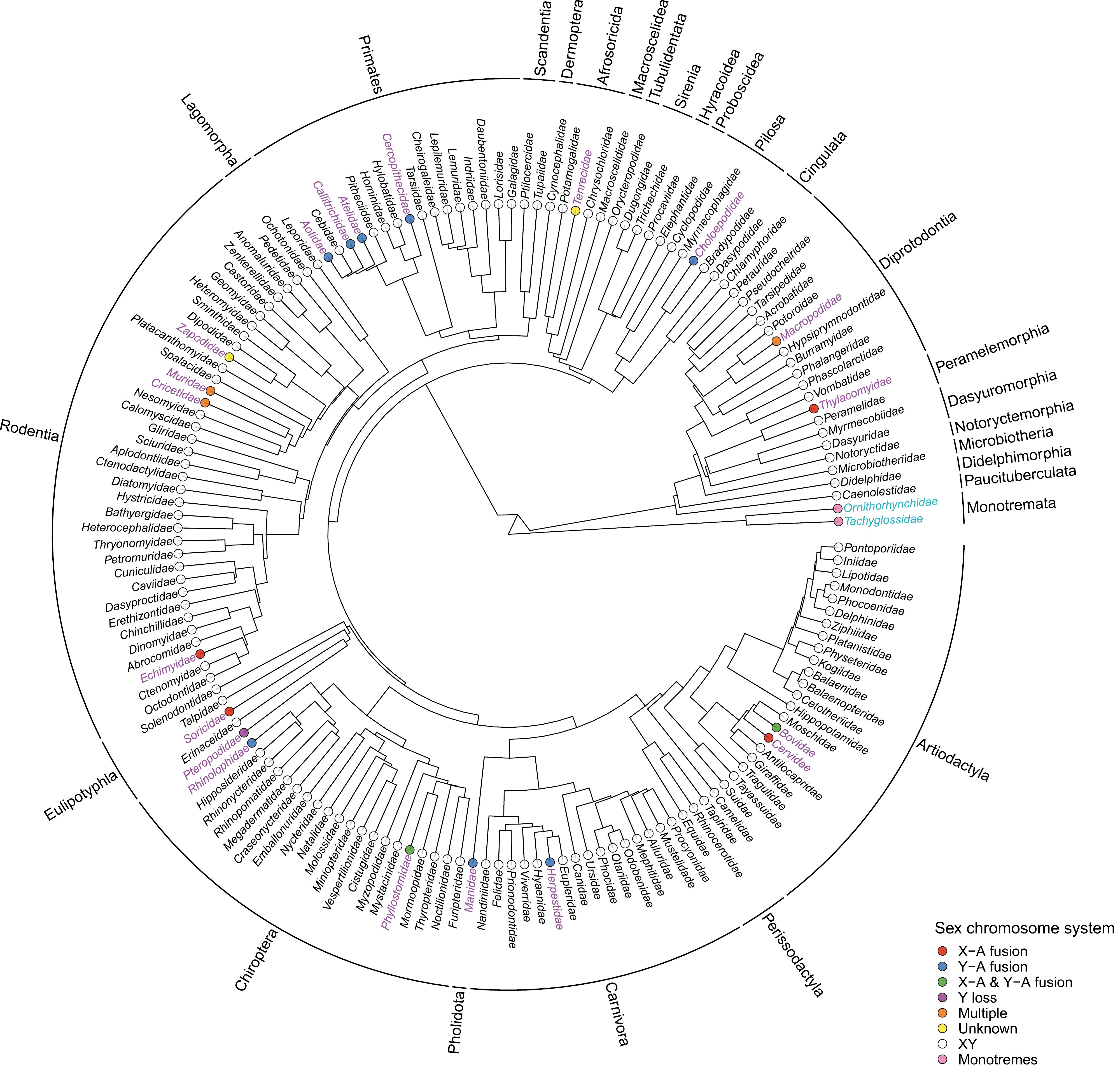Ongoing work
Most of our understanding of sex chromosomes come from static and stable systems, where there isn’t much change occurring. New, or “neo,” sex chromosomes allow us to understand the early stages of genomic evolution since old sex chromosomes can fuse to autosomes allowing for the process to play out again (and allow us to study early stages!). I am using comparative genomics and population genomics methods to understand how and why multiple neo-sex chromosomes are maintained in the mountain pine beetle. This question is not only fascinating from a genome evolution perspective, but also, from a speciation perspective where sex differences and incompatibilities can often be a pathway to species divergence. More to come on this!
Past work
My collaborators and I documented the variant sex chromosomes in what is typically regarded as a static and stable sex chromosome system, the mammal X and Y. In our recent review on variant sex chromosomes in mammals (Hughes, Lagunas-Robles, & Campbell 2024), we show that variant sex chromosomes are abundant based on published karyotype data. We also discuss the role of genomic and sexual conflict in the evolution of variant sex chromosome systems.

Figure 1 from (Hughes, Lagunas-Robles, & Campbell 2024, Journal of Heredity): Family level phylogeny of Mammalia: Families with species having variant sex chromosomes in purple. Monotremes in blue. The key has the sex chromosome system categories.
